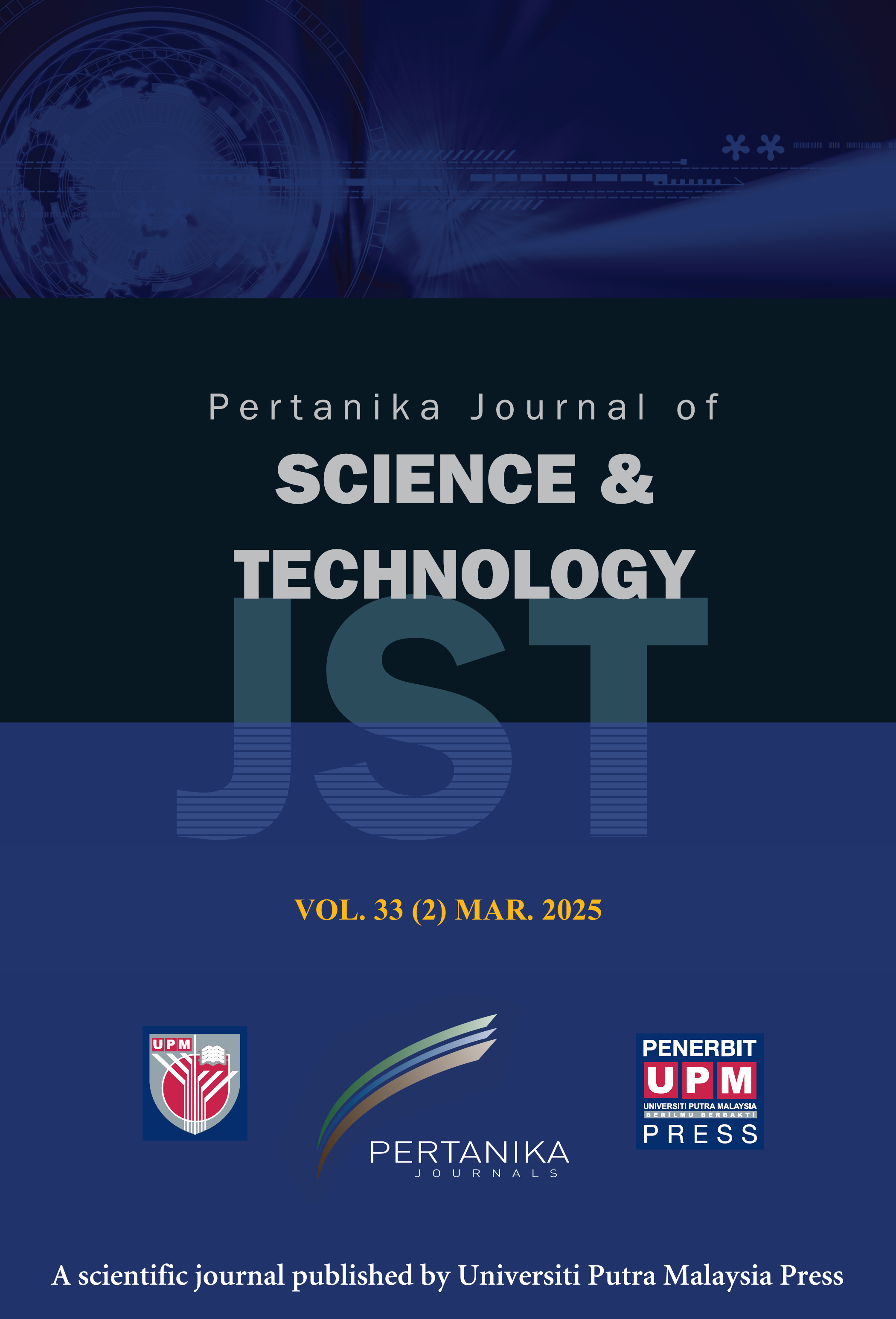PERTANIKA JOURNAL OF SCIENCE AND TECHNOLOGY
e-ISSN 2231-8526
ISSN 0128-7680
J
J
Pertanika Journal of Science & Technology, Volume J, Issue J, January J
Keywords: J
Published on: J
J
-
Cerniglia, L., Zorratto, F., Cimino, S., Laviola, G., Ammaniti, M., & Adriani, W. (2016). Internet addiction in adolescence: Neurobiological, psychosocial and clinical issues. Neuroscience and Biobehavioral reviews, 76(Part A), 174-184. https://doi.org/10.1016/j.neubiorev.2016.12.024
-
Chung, T. W. H., Sum, S. M. Y., & Chan, M. W. L. (2019). Adolescent internet addiction in Hong Kong: Prevalence, psychosocial correlates, and prevention. Journal of Adolescent Health, 64(6), 34-43. https://doi.org/10.1016/j.jadohealth.2018.12.016
-
Internet Society. (2019). About the internet. https://www.internetsociety.org/internet/
-
Internet World Stats. (2018). World internet statistics. https://www.internetworldstats.com/
-
Koay, K. Y. (2018). Assessing cyberloafing behaviour among university students: A validation of the cyberloafing scale. Pertanika Journal of Social Sciences & Humanities, 26(1), 409-424.
-
Kuss, D. J., & Lopez-Fernandez, O. (2016). Internet addiction and problematic internet use: A systematic review of clinical research. World Journal Psychiatry, 6(1), 143-176. http://doi.org/10.5498/wjp.v6.i1.143
-
Lee, E. (2018, October 31). Special report: 11th Malaysia plan mid-term review: Improving productivity for economic growth. The Edge Markets. https://www.theedgemarkets.com/article/special-report-11th-malaysia-plan-midterm-review-improving-productivity-economic-growth
-
Livingstone, S., Nandi, A., Banaji, S., & Stoilova, M. (2017). Young adolescents and digital media: Uses, risks and opportunities in low- and middle-income countries: A rapid evidence review. Gender and Adolescence: Global Evidence. https://www.gage.odi.org/publication/digital-media-risks-opportunities/
-
Mak, K.-K., Lai, C.-M., Watanabe, H., Kim, D.-I., Bahar, N., Ramos, M., Young, K. S., Ho, R. C. M., Aum, N.-R., & Cheng, C. (2014). Epidemiology of internet behaviors and addiction among adolescents in six Asian countries. Cyberpsychology, Behavior and Social Networking, 17(11), 720-728. https://doi.org/10.1089/cyber.2014.0139
-
Tang, J., Yu, Y., Du, Y., Ma, Y., Zhang, D., & Wang, J. (2014). Prevalence of IA and its association with stressful life events and psychological symptoms among adolescent internet users. Addictive Behaviors, 39(3), 744-747. https://doi.org/10.1016/j.addbeh.2013.12.010
-
Telef, B. B. (2016). Investigating the relationship among internet addiction, positive and negative effects, and life satisfaction in Turkish adolescents. International Journal of Progressive Education, 12(1), 128-135.
-
Valkenburg, P. M., & Peter, J. (2007). Online communication and adolescent well-being: Testing the stimulation versus the displacement hypothesis. Journal of Computer-Mediated Communication, 12(4), 1169-1182. https://doi.org/10.1111/j.1083-6101.2007.00368.x
-
Xin, M., Xing, J., Pengfei, W., Houru, W., Mengcheng, Z., & Hong, Z. (2018). Online activities, prevalence of internet addiction and risk factors related to family and school among adolescents in China. Addictive Behaviors Reports, 7, 14-18. https://doi.org/10.1016/j.abrep.2017.10.003
-
Young, K. S. (1998). Internet addiction: The emergence of a new clinical disorder. Cyberpsychology & Behaviour, 1(3), 237-244. https://doi.org/10.1089/cpb.1998.1.237
ISSN 0128-7680
e-ISSN 2231-8526




